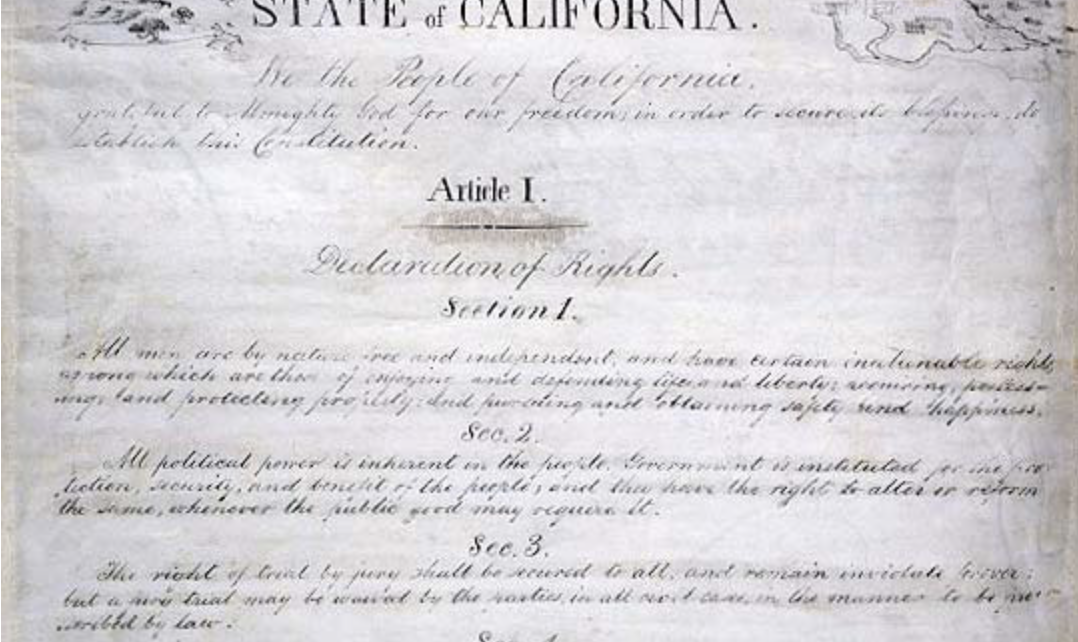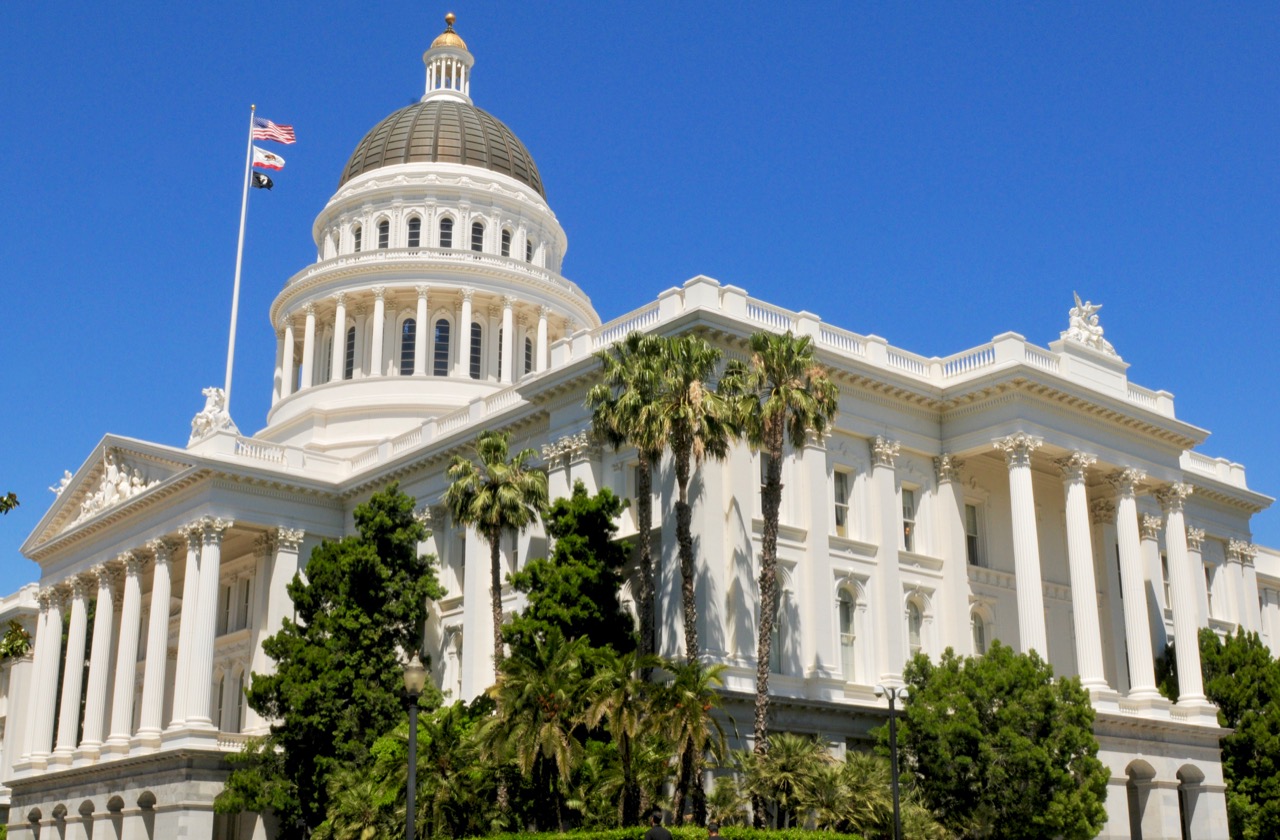
California Constitution. (Photo: www.sos.ca.gov)
Frequently Asked Questions about U.S. and California Constitutions
What are the main provisions of the state constitution?
By Chris Micheli, March 31, 2024 2:30 am
What are some key principles of the United States Constitution? The U.S. Constitution vests in the federal government certain specified powers. And, the powers that not enumerated in the federal Constitution are reserved to the states pursuant to the Tenth Amendment. This is what we term our governmental system of federalism. The states play a critical role in our federal system of governance.
What are some of the protections contained in the state and federal constitutions? The U.S. Constitution provides many of our individual rights in the Bill of Rights, while similar protections are provided in the first Article of the California Constitution. The state constitution includes additional protections that the federal constitution does not. Federal constitutional protections apply to the states by means of the Fourteenth Amendment. As such, California and its Constitution are prohibited from violating fundamental rights provided by the United States Constitution.
What is contained in the federal constitution? The federal constitution has seven articles, which are followed by 27 Amendments.
What are the main provisions of the federal constitution? The U.S. Constitution sets forth the three branches of government in the first three Articles. Both the federal and state constitutions provide the three branches of government in the same order: legislative, executive and judicial. The fourth Article of the federal constitution deals with the states, followed by an article on amending the constitution, an article dealing with miscellaneous provisions, and then its ratification.
How many amendments are there to the federal constitution? There are 27 Amendments, and the first ten Amendments are called the “Bill of Rights.”
How many articles are in the state constitution? The state constitution has thirty-three articles (do not be confused by the numbering as some articles do not exist).
What are the main provisions of the state constitution? The California Constitution begins with individual rights, then provides the powers of direct democracy reserved to the people, followed by establishment of the State, and then to the three branches of government. Like its federal counterpart, the state constitution provides the three branches of government in this order: legislative, executive and judicial.
What are other key provisions of the state constitution? The state constitution then proceeds to numerous Articles that have been added over the decades by the people, from transportation funding to redistricting to taxation to engineering services. Many of these Articles represent successful enactment of statewide ballot measures through the use of the initiative process.
- Division of Real Property in California - August 10, 2025
- Emergency Protective Orders for Preventing Domestic Violence - August 9, 2025
- Another Legislative Statement in Bills - August 8, 2025








I would definitely recommend the book “The California State Constitution” by Grodin, Massey and Cunningham one of the very readable Oxford Commentaries series. There is so much attention paid to the US Constitution that little attention seems to have been paid over the years for using the state constitution to challenge and overturn the more dangerous, damaging and outright insane AB’s and Propositions. Very few seem to get struck down as unconstitutional under the state constitution even though so many seem to be on very shaky ground.
I think a very creative use of the legal precedents set between the 1960’s to 1980’s by environmentalist lobby to establish legal rights were none were explicitly intended by statute law or case law could be used to shut down all the recent pro criminals laws that were passed under the guise of “criminal justice reform” which have caused the recent huge crime wave. Just like they did in the 1960’s to 1990’s until shutdown by Three Strikes and Federal mandatory sentencing laws. If Section 28, The Victims Bill of Rights, passed in 1982 could be used not only to protect the rights of victims but to extend that to a right not be a crime victim then the bar could be set very low for prison sentences (just like with Three Strikes in the 1990’s) and very high for probation / release from prison.
Because as Three Strike proved locking up criminals collapsed the crime rate (California went from highest in nation to about average in 5 years) and as recidivism rates show only the very young and the middle aged / old criminals have any tendency to not re-offend. So locking up criminal from late teens to mid 40’s for as long s possible greatly reduces the number of crime victims.
That is just one example. At the local level the “Home Rule” legal principal gives a lot of lee-way for opting out of the more damaging and dangerous ideas from Sacramento. The case law seems a bit convoluted but as long as local government is ready and prepared to fight the inevitable (and illegal) withholding of states funding in retaliation I think the influence of Sacramento could be very serious reduced . Like it had been in generations past. The currents situation is fairly recently. Pretty much since the 1970’s. Another Jerry Brown legacy. It can be reversed.
There there is the who subject of equal voting rights Districts based on equal number of citizens rather than on Census Bureau estimations of population. Federal districts could not be changed by the state constitution but it does see, to give that power for state and local districts. That one change would reduce the Democratic party lock districts / cities by about two thirds and make most districts competitive again.
There are a lot of very interesting legal powers and legal rights in the state constitution. Well worth reading.